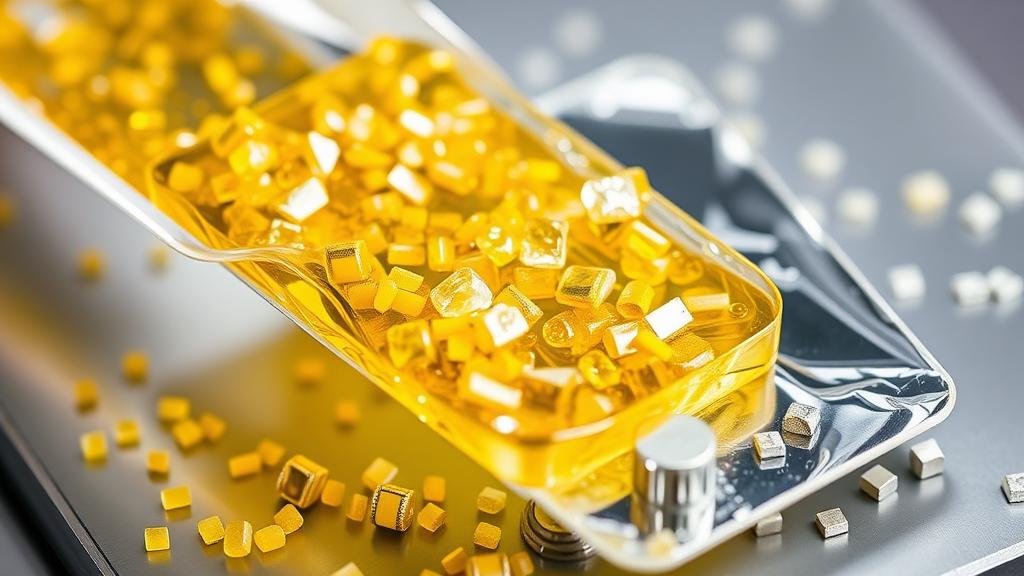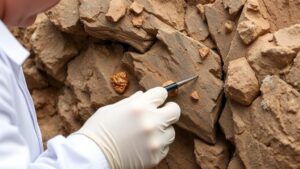How to Use Ion Exchange Resins for Gold and Silver Recovery
How to Use Ion Exchange Resins for Gold and Silver Recovery
Ion exchange resins are versatile materials utilized in various applications, including the recovery of precious metals such as gold and silver from solutions. This article explores the methods, mechanisms, and practical applications of ion exchange resins for the efficient extraction of these valuable metals.
Understanding Ion Exchange Resins
Ion exchange resins are polymeric materials that contain mobile ions, which can be exchanged for other ions present in a solution. These resins are categorized into two main types: cation exchange resins, which attract positively charged ions, and anion exchange resins, which attract negatively charged ions. This property is crucial for selectively targeting gold and silver ions from complex mixtures.
Properties of Ion Exchange Resins
- Selectivity: Different resins exhibit varying affinities for specific ions, allowing for tailored extractions.
- Capacity: The amount of metal ions a resin can retain is determined by its surface area and active sites.
- Regeneration: Most resins can be regenerated, meaning they can be cleaned and reused for multiple extraction cycles.
The Process of Gold and Silver Recovery Using Ion Exchange Resins
Step 1: Preparation of the Solution
The first step in the recovery process involves preparing the solution from which gold and silver will be extracted. This typically involves leaching metals from ores using cyanide or other solvents. For example, in gold cyanidation, gold ions are transferred to a solution, creating a solution rich in gold salts.
Step 2: Selection of the Appropriate Resin
Different resins have varied selectivity for gold and silver ions. Resins such as chelating agents or specialized anion exchange resins are often preferred for maximizing recovery. For example, Amberlite IRC-718 has shown effective results in binding gold ions due to its high selectivity and affinity.
Step 3: Ion Exchange Process
The ion exchange process occurs when the prepared solution is passed through a column containing the resin. The metal ions in the solution displace the ions attached to the resin, allowing the gold and silver ions to be retained:
- Metal ions adhere to the resin.
- Other ions, such as sodium or chloride, are released into the solution.
Step 4: Recovery of Metals
Once the metal ions are adsorbed onto the resin, they must be eluted (washed out). A suitable eluent, typically a concentrated acid or ammonia solution, is used to strip the metal ions off the resin. For example, a solution of hydrochloric acid can effectively remove gold from a resin. The resulting solution can then be processed further to precipitate pure gold or silver. This step is crucial for recovering the target metals in a concentrated form.
Real-World Applications and Case Studies
Various industries have implemented ion exchange resins for precious metal recovery with notable success. For example, in the mining sector, the use of ion exchange technology has been reported to enhance recovery rates significantly:
- In a case study from a gold mine in South Africa, implementing ion exchange technology resulted in an increase in gold recovery efficiency by over 20% compared to traditional methods.
- The electronics industry has also employed ion exchange resins for recovering precious metals from electronic waste, with recoveries of gold and silver often exceeding 90%.
Challenges and Considerations
While the benefits of using ion exchange resins for gold and silver recovery are clear, several challenges must be addressed:
- Cost: High-quality ion exchange resins can be expensive, and their initial investment must be weighed against yield.
- Contamination: Impurities in the processing solution may affect resin performance.
- Regeneration: The regeneration process can be complex; mishandling may affect the life span of the resin.
Conclusion and Actionable Takeaways
Utilizing ion exchange resins for the recovery of gold and silver presents a compelling methodology in both mining and recycling industries. Understanding the fundamentals of ion exchange, selecting the appropriate resin, and optimizing the recovery process are vital for maximizing the efficiency and cost-effectiveness of the operation.
For practitioners looking to implement this technology:
- Evaluate your raw materials to determine the appropriate resin type.
- Design a small-scale pilot to assess the efficiency before full-scale implementation.
- Regularly monitor and maintain resin performance through planned regeneration protocols.
Successful implementation of ion exchange resins can lead to not only financial returns but also more sustainable practices in precious metal recovery.



